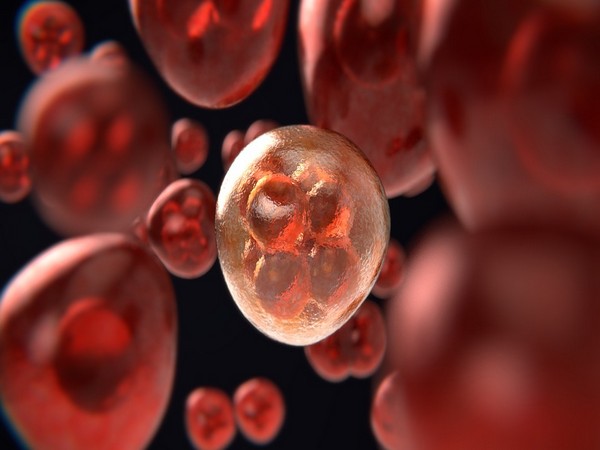
[ad_1]
Copenhagen [Denmark], July 3 (ANI): A new study looking at the membrane of cancer cells has shown a whole new way in which cancer cells can repair damage that might otherwise kill them.
In normal cells and cancer cells, the cell membrane acts like the skin of cells. And membrane damage can be fatal. The interior of cells is fluid, and if a hole is made in the membrane, the cell simply floats and dies – much like a hole in a water balloon. The study was published in the journal Science Advances
Therefore, damage to the cell membrane needs to be repaired quickly, and new research by a team of Danish researchers shows that cancer cells use a technique called macropinocytosis.
The technique, which is already a known tool for cells in other settings, involves cancer cells pulling intact cell membrane over the damaged area and sealing the hole within minutes. Then the damaged part of the cell membrane is split into small spheres and transported to the “stomach” of the cells – the so-called lysosomes, where they are broken down.
In the lab, researchers damaged the membrane of cancer cells using a laser that pierces small holes in the membrane and triggers macropinocytosis. Here they can see that if the process is inhibited by substances that block the formation of the small membrane spheres, the cancer cell can no longer repair the damage and die.
– Our research provides very basic knowledge about how cancer cells survive. In our experiments, we also showed that cancer cells die if the process is inhibited, indicating that macropinocytosis is a target for future treatment.
It’s a long-term perspective, but it’s interesting, says group leader Jesper Nylandsted of the Danish Cancer Society Research Center and the University of Copenhagen, who led the new research and who, during for many years, has studied how cancer cells repair their membranes. .
Possibility of recycling
One of the most dangerous properties of cancer is when the disease spreads throughout the body. If tumors appear in new parts of the body, the disease becomes more difficult to treat and usually requires more extensive forms of treatment. It is also when cancer cells spread through the body’s tissues that they are particularly prone to damage their membrane.
Researchers from the Danish Cancer Society have already shown how cancer cells can use another technique to repair the membrane, namely by knotting the damaged part, much like when a lizard throws its tail.
However, laboratory experiments could indicate that particularly aggressive cancer cells use macropinocytosis. This may be because the cancer cell has the ability to reuse the damaged membrane when it is degraded in the lysosomes. This type of recycling will be useful for cancer cells because they divide frequently, requiring large amounts of energy and material for the new cells.
And although the researchers have now published the new findings, their work is not done. This is explained by another member of the research team, postdoctoral fellow Stine Lauritzen Sonder.
“We continue to work and study how cancer cells protect their membranes. In connection with macropinocytosis in particular, it is also interesting to see what happens after the membrane closes. We think the first patch is a bit coarse and that membrane repair is needed afterwards. This can be another weak spot in cancer cells and it’s something we want to take a closer look at, she said. (ANI)
(This is an unedited and auto-generated story from the syndicated news feed, the staff at LatestLY may not have edited or edited the body of the content)
[ad_2]
Source link